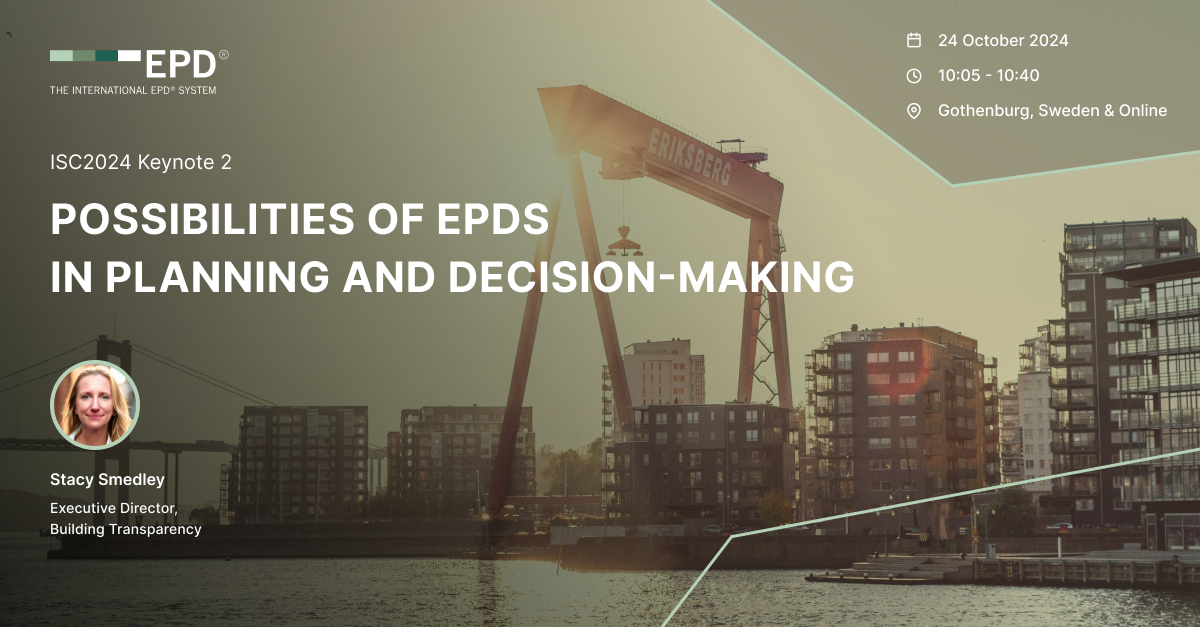Keynote 2 | EPDs in Planning & Decision-Making
Possibilities of EPD data in planning and decision-making

Environmental Product Declarations (EPDs) provide liable and science-based data on the environmental impact of products, which aims to further facilitate planning and decision-making processes. Yet the environmental data encapsulated in an EPD could appear less approachable for important decision-makers outside of the EPD expert community. For example, how could we improve accessibility of EPD data to support architects in opting for more environmentally friendly building materials.
Moreover, product-specific environmental data in the EPDs have its limitations when it comes to a systematic evaluation. For example, EPDs are often conducted on a specific construction material, and it would be beneficial to expand the scale of the assessment to building level for a systematic approach.
In addition,construction industry has traditionally had the highest adoption of EPDs. For a holistic sustainability approach, how could we expand the utilisation of EPDs beyond its prevalent application in the construction industry?
With the aim to enhance overall sustainability, this session touches upon 1) how to adopt a simplified process to make EPDs more accessible, 2) how to utilise EPD data at a greater scale to support a holistic assessment of environmental impact, and 3) how to encourage adoption from companies outside of the construction industry.